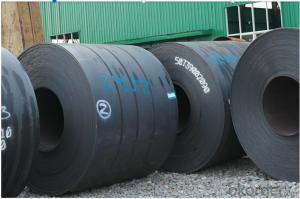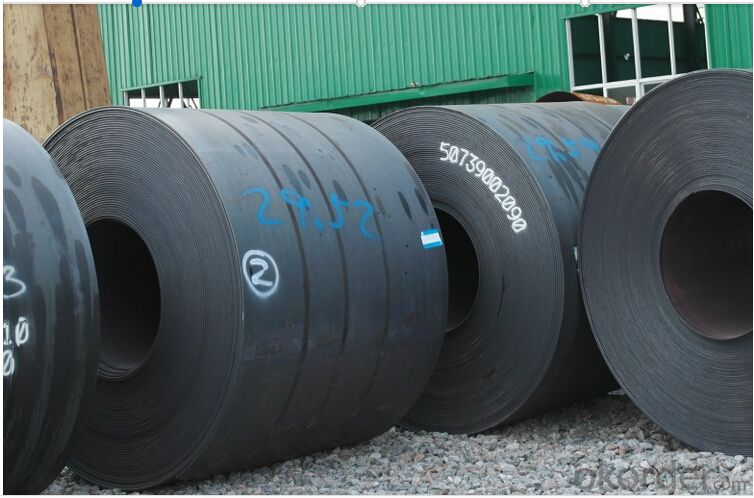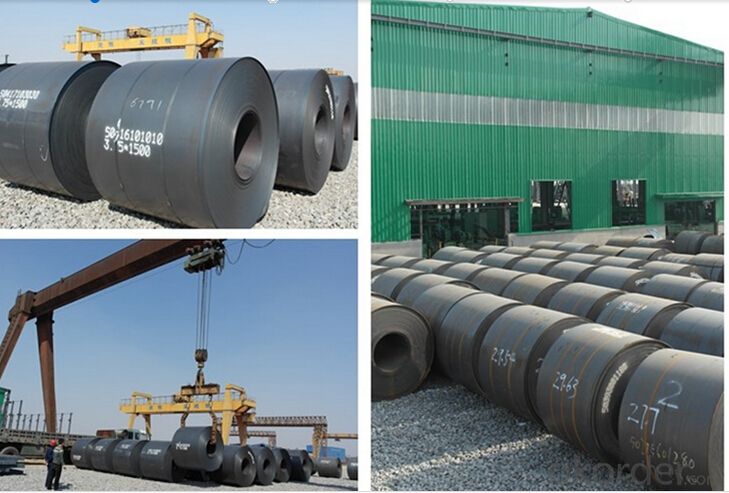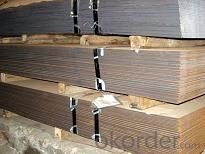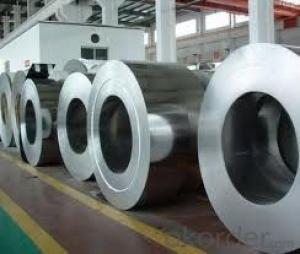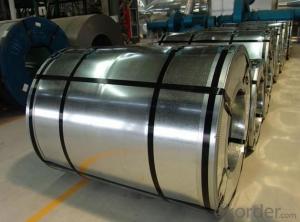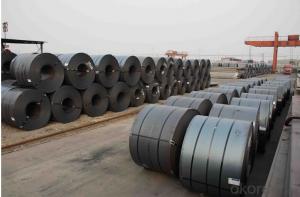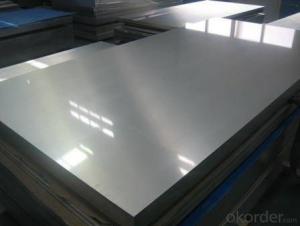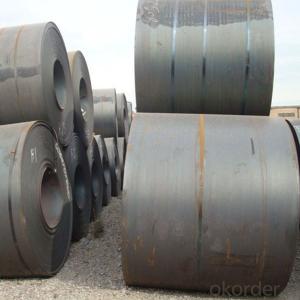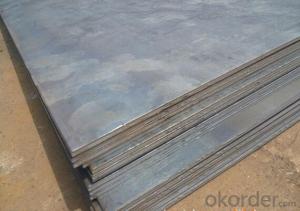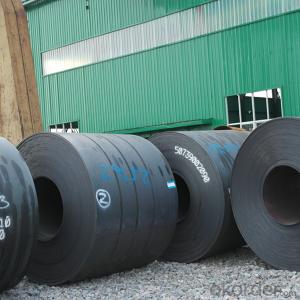SS400/A36 Hot rolled steel coil and sheet
- Loading Port:
- China main port
- Payment Terms:
- TT OR LC
- Min Order Qty:
- 25 m.t
- Supply Capability:
- 1000000 m.t/month
OKorder Service Pledge
OKorder Financial Service
You Might Also Like
Specification
uick Details
| Standard: | ASTM, GB, JIS | Steel Grade: | Q235B-Cr, Q345B-Cr, SS400Cr,A36Cr | Thickness: | 1.8mm-20mm |
| Place of Origin: | Hebei, China (Mainland), Hebei, China (Mainland) | Technique: | Hot Rolled | Surface Treatment: | Natural |
| Application: | Industry, Construction, Furniture, Decoration | Model Number: | 2.6-16*1500mmL | Brand Name: | CNBM |
| Width: | 700mm-1500mm | Length: | As customers' requirement | Packing Detail: | Export standard package:bundled or be required |
| Sample Service: | Free available | ProName: | hot sale china HR steel coil | Factory: | Luan County Lianxu Strip Progress Co., Ltd. |
| Stock: | Standing stock more than 10000 tons | Business type: | Manufacturer | Brand: | Lianxu |
| Price: | Competitive price | Quality: | good quality |
Hot Sale China HR Steel Coil
Package and loading
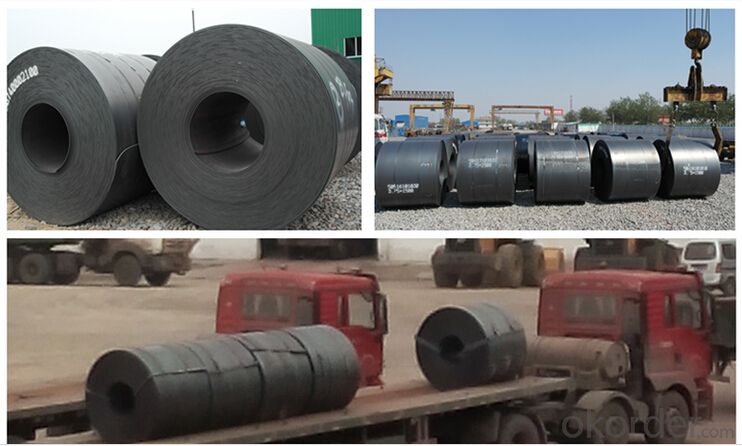
Product Description
| Item | Hot rolled steel coil | Type | We can do in hot rolled steel plate,coil and plate bar |
| Length and Wideth | all can be customized as your requirement | Packing | Bundle, loose and bare or according customer inquirement |
| Standard | JIS, AISI, ASTM,GB | Usage | steel structures,bridge construction,buildings,engineering machinery etc |
| Payment | Small quantity (within total $2000.00) T/T , 30% in advance , 70% after receiving the copy of B/L .Irrevocable L/C at sight. | Trade Term | FOB XINGANG,JINGTANG PORT,CIF,CFR |
| MOQ | 25tons | Delivery time | 15 days after get the deposit |
We have our own factories with advanced equipment and well trained workers.
We can provide factory price with trading company services.
We control production quality very strictly to keep none compensation and make inspection for customer during the production and loading.
We guarantee 24 hours online response.
We accept small order quantity before formal cooperation.
Free sample and latest price list will be offered for your evaluation.
During The Delivery
We will arrange the shipment with reliable service and reasonable price, all the cost will be clear for you to compare.
- Q: How can I tell the wear resistance, strength, ect from the name of the steel?how could I tell the difference between 420 and 440 steel. what does the HC in 420 HC steel mean? what do the numbers and letters in s30v steel mean?
- So what does all that mean in the real world of knives. 420 has very low carbon by blade standards, as such it is just junk steel. There are three grades of 440, A, B and C. The amount of carbon in A is about half of what C has. (carbon is what makes steel get hard). Iron is very much like a sponge in that it can absorb and hold different alloys. These alloys give the iron different attributes, and they can magnify each other. Like a sponge iron can only hold so much, for Chromium it is around 13%. At that point the steel becomes stainless. The drawback is a loss of strength. As a bladesmith my knives are generally 59 to 60 rch, 420 and 440 at its hardest is 59 but at that it is brittle so most makers draw it down to around 57. In my test a knife made of 420 couldn't make 5 slicing cuts through rope (most couldn't make one). 440 averaged between 5 and 10. Compared to the lowest grade of carbon steel I use (5160) which average between 25 to 30 on the same rope. I have tested many stainless blades and the rule always the same, the more chromium past 13% the weaker the blade and the less edge holding ability.
- Q: What are the cost implications of using steel coils in manufacturing?
- The cost implications of using steel coils in manufacturing can vary depending on several factors. Firstly, the cost of purchasing steel coils themselves can have a significant impact on overall manufacturing expenses. Steel prices are influenced by factors such as supply and demand, global market conditions, and any tariffs or trade regulations in place. Fluctuations in steel prices can directly affect the cost of purchasing steel coils, which in turn affects the overall manufacturing cost. Additionally, the size and weight of steel coils can impact transportation costs. Steel coils are typically heavy and bulky, which can incur higher shipping expenses due to increased transportation requirements. The distance between the steel supplier and the manufacturing facility can also influence shipping costs. Furthermore, the processing and transformation of steel coils into finished products can contribute to manufacturing costs. Additional steps such as cutting, shaping, welding, or coating may be required depending on the desired end product. These additional processes can require specialized machinery, skilled labor, and additional materials, all of which can add to the overall manufacturing expenses. It is also essential to consider the quality and durability of steel coils. While using high-quality steel coils may initially result in higher costs, it can lead to long-term cost savings by reducing the need for repairs or replacements. Moreover, it is crucial to factor in any regulatory or compliance requirements associated with using steel coils in manufacturing. Certain industries may have specific standards or certifications that need to be met, which can involve additional costs for testing, inspections, or compliance procedures. Lastly, it is important to consider the potential cost savings that steel coils can offer in terms of efficiency and productivity. Steel coils are often preferred in manufacturing due to their strength, durability, and ease of fabrication. These qualities can lead to improved production processes, reduced waste, and higher overall output, which can offset the initial cost of using steel coils. Overall, the cost implications of using steel coils in manufacturing can be influenced by several factors such as steel prices, transportation costs, additional processing requirements, quality considerations, regulatory compliance, and potential productivity gains. Careful analysis and consideration of these factors are crucial in understanding the overall cost impact on manufacturing operations.
- Q: Explain how you could make plastic sink and steel float?
- plastic can be denser than water. Make it a brick and it sinks. Ships float because they are mostly air - surrounded by steel.
- Q: How are steel coils used in the manufacturing of railroads?
- Steel coils are used in the manufacturing of railroads to produce rails, which form the tracks that trains run on. These coils are rolled into long, straight sections and then shaped into the required rail profile. The rails are then cut to the desired length and undergo various processes, such as heat treatment and finishing, to enhance their strength and durability. Overall, steel coils are a crucial raw material in the creation of reliable and robust railroad infrastructure.
- Q: What is the role of steel coils in the manufacturing of bridges?
- Steel coils play a crucial role in the manufacturing of bridges as they are used as the primary material for constructing the structural components of the bridge, such as beams, columns, and girders. These coils are manufactured by rolling steel into flat strips, which are then wound into large coils. The high strength and durability of steel make it an ideal choice for bridge construction, as it can withstand heavy loads, extreme weather conditions, and provide long-lasting support. The coils are processed further to fabricate the required bridge components, ensuring the structural integrity and stability of the bridge.
- Q: What are the factors that affect the price of steel coils?
- There are several factors that influence the price of steel coils. Firstly, the cost of raw materials such as iron ore and coal, which are essential for steel production, can significantly impact the price. Additionally, the demand and supply dynamics of steel in the market play a crucial role. Factors like economic growth, construction activity, and infrastructure development can drive up the demand for steel, leading to price increases. On the other hand, if there is excess supply or reduced demand, prices may decrease. Moreover, fluctuations in energy costs, transportation expenses, and currency exchange rates can also affect the final price of steel coils.
- Q: What are the different packaging options for steel coils?
- The different packaging options for steel coils include wooden pallets, steel cradles, eye-to-sky or eye-to-wall packaging, and steel banding or strapping. These options are used to ensure the safe transportation and storage of steel coils, preventing damage and maintaining their shape and quality.
- Q: How are steel coils used in the manufacturing of automotive doors?
- Steel coils are used in the manufacturing of automotive doors by being shaped and cut into the desired size and shape for the door panels. These coils are then formed into the appropriate curvature and attached to the door frame, providing strength, rigidity, and durability to the door structure.
- Q: How do steel coil manufacturers manage inventory?
- Steel coil manufacturers manage inventory through various strategies and techniques to optimize production, minimize costs, and meet customer demands. Here are some common practices employed by steel coil manufacturers to effectively manage their inventory: 1. Demand forecasting: Steel coil manufacturers analyze market trends, historical sales data, and customer orders to forecast future demand accurately. This helps them determine the required inventory levels and plan production accordingly. 2. Just-in-time (JIT) inventory: Many steel coil manufacturers follow the JIT inventory system, where they maintain minimal inventory levels by receiving raw materials shortly before production and delivering finished goods immediately after production. This approach minimizes carrying costs and reduces the risk of excess inventory. 3. Supplier collaboration: Close collaboration with suppliers is crucial to manage inventory effectively. Steel coil manufacturers work closely with their suppliers to ensure timely delivery of raw materials, monitor quality, and maintain consistent supply. Regular communication and sharing of production forecasts help suppliers plan their inventory accordingly. 4. Safety stock: Steel coil manufacturers maintain a certain level of safety stock to account for unpredictable fluctuations in demand, supply chain disruptions, or delays in raw material deliveries. This acts as a buffer to avoid stockouts and maintain customer satisfaction. 5. Inventory control systems: Implementing modern inventory control systems, such as Enterprise Resource Planning (ERP) software, allows steel coil manufacturers to track inventory levels, monitor stock movements, and automate various inventory management processes. These systems provide real-time data and analytics, enabling better decision-making and improved inventory accuracy. 6. Efficient production planning: Steel coil manufacturers optimize production planning to minimize inventory holding costs. They schedule production based on demand forecasts, prioritize orders, and aim for efficient production runs to reduce setup times and material wastage. 7. Regular inventory analytics: Steel coil manufacturers regularly analyze their inventory data to identify slow-moving items, obsolete stock, or excess inventory. By identifying such issues, they can take corrective actions like offering discounts, initiating sales promotions, or adjusting production schedules to prevent inventory buildup. Overall, effective inventory management is crucial for steel coil manufacturers to maintain a lean and efficient operation while meeting customer demands. By applying these strategies, manufacturers can strike a balance between supply and demand, reduce costs, and improve customer satisfaction.
- Q: How are steel coils packaged for shipping?
- Steel coils are typically packaged for shipping by being tightly wound and secured with steel strapping or bands. They are then placed onto pallets or into crates to protect them during transportation. Additionally, wooden or metal dunnage is often used to separate and stabilize the coils, ensuring they remain intact and in proper condition throughout the shipping process.
Send your message to us
SS400/A36 Hot rolled steel coil and sheet
- Loading Port:
- China main port
- Payment Terms:
- TT OR LC
- Min Order Qty:
- 25 m.t
- Supply Capability:
- 1000000 m.t/month
OKorder Service Pledge
OKorder Financial Service
Similar products
Hot products
Hot Searches
Related keywords
